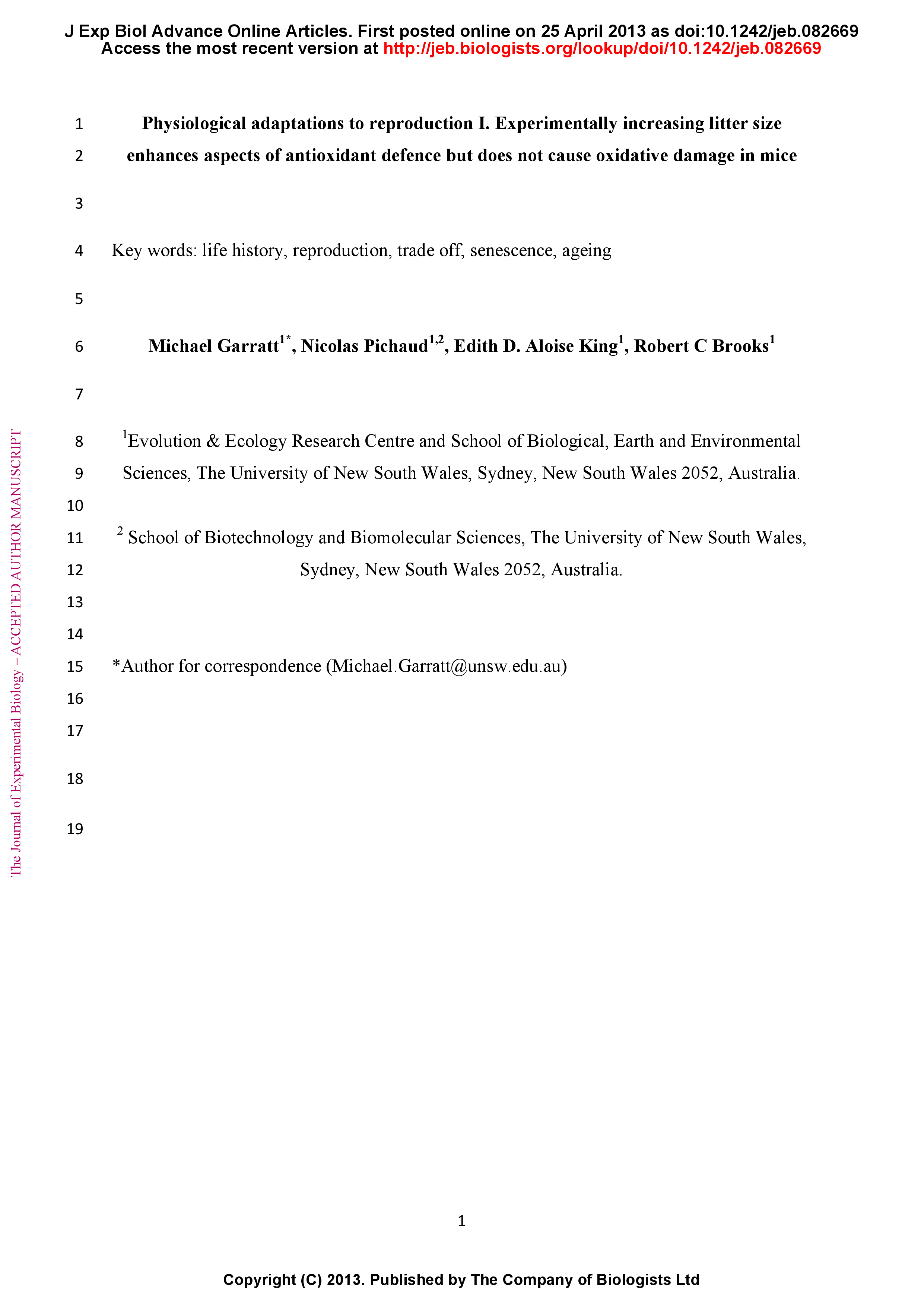Summary
Life history theory suggests that investment in reproduction can trade off against growth, longevity and both reproduction and performance later in life. One possible reason for this trade-off is that reproduction directly causes somatic damage. Oxidative stress, an overproduction of reactive oxygen species in relation to cellular defences, can correlate with reproductive investment and has been implicated as a pathway leading to senescence. This has led to the suggestion that this aspect of physiology could be an important mechanism underlying the trade-off between reproduction and lifespan. We manipulated female reproductive investment to test whether oxidative stress increases with reproduction in mice. Each female's pups were cross-fostered to produce litters of either two or eight, representing small and large levels of reproductive investment for wild mice. No differences were observed between reproductive groups at peak-lactation for several markers of oxidative stress in the heart and gastrocnemius muscle. Surprisingly, oxidative damage to proteins was lower in the livers of females with a litter size of eight than in females with two pups or non-reproductive control females. While protein oxidation decreased, activity levels of the antioxidant enzyme superoxide dismutase increased in the liver, suggesting this may be one pathway used to protect against oxidative stress. Our results highlight the need for caution when interpreting correlative relationships and suggest that oxidative stress does not increase with enhanced reproductive effort during lactation.








